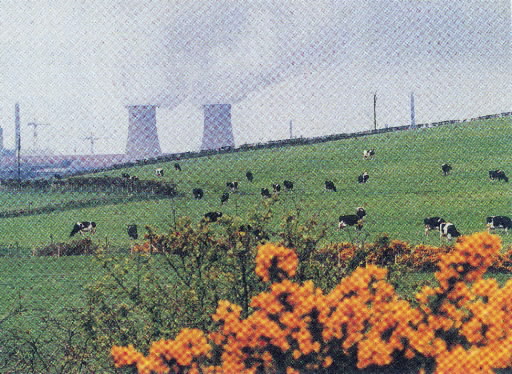1. The Worst Nuclear Accident in British History
Mar. 21, 2013
Chapter 5: Britain and France
Part 1: The Rough Road to Nuclear Supremacy
Part 1: The Rough Road to Nuclear Supremacy
Facing the Irish Sea in the northwest of England lies the notorious Sellafield Nuclear Complex. Formerly known as Windscale, the plant played a leading role in establishing Britain as the third nation to possess a nuclear weapons capability. Today it continues to perform a vital function by engaging in reprocessing nuclear fuel. The price of development, however, has been a series of accidents which have caused incalculable damage to the environment. In 1984, the plant's name was changed in an attempt to improve the less-than-spotless image it has gained during the forty years it has been in operation.
1. The Worst Nuclear Accident in British History
On October 10, 1957, Arthur Wilson glanced up from the instruments he was checking to be confronted with a horrifying sight. He had been doing his regular round of the gauges in the special reactor used for plutonium manufacture, when he saw flames shooting up from around the fuel rods. After a second, when he realized that his eyes had not deceived him, he yelled "Fire!" For a short while there was no reaction; everybody was quite confident that such an accident would never occur at Windscale.
This is how the worst nuclear accident in Britain's history began. The story of the fire at Windscale is only too well known by people all over the world closely involved with the problems of nuclear power generation. Wilson and his workmates quickly turned their attention to putting out the fire. But the blaze, rather than subsiding, steadily increased in intensity. Finally it was decided to pour water on the reactor, although they were aware that this could cause an explosion. For a day and a night, a constant stream of water was leveled at the reactor, and, by the afternoon of October 12, the fire was at last put out.
Along with smoke and steam, vast quantities of radioactive material were released from the reactor, spreading around the plant and contaminating the surrounding farmland. Wilson, at that time an up-and-coming young technician, was exposed to radiation as were the other employees. "Before then," he told us, "there had been a number of minor accidents, but that one was terrible. I heard later on that we only just escaped meltdown on that occasion."
Wilson had worked at the plant since the first reactor was put into operation in 1950. Four years later he began to have problems with his right foot, and after the accident his left foot began to trouble him, too. Five years after the accident he found himself unable to work, and he had no choice but to retire. He received no compensation of any kind. Widowed and in a wheelchair, Wilson has lived by himself for the last twelve years in the village of Millom, twenty-five miles from the complex.
Windscale's No.1 reactor, radiation from which had caused his disability, was the pride of the British nuclear weapons development program, which had sprung up in response to the American monopoly of the field at that time. Plutonium processed in Windscale was used in the manufacture of Britain's first atomic bomb, which was successfully exploded in 1952 at Monte Bello Island in Australia. In 1956, a year before the accident, the world's first reactor to be used for commercial power generation had been completed. The company promised it would make electricity "too cheap to meter." While the reactor supplied power to the surrounding district, plutonium for military use was extracted from the used fuel.
At one time Wilson felt proud of his contribution to these achievements. "On the other hand," he said, lying back on the sofa bed, "look what Windscale has done to me. All I can move is my right hand." After Wilson was forced to leave the plant and live on a small pension, Windscale continued to expand its activities into the areas of nuclear power generation and fuel reprocessing. The road has not always been a smooth one, though, as this list of accidents shows:
November 1963 : Radiation leakage from advanced gas-cooled reactor. Six employees exposed.
August 1 970 : Accident at fuel reprocessing plant involving plutonium solution.
April 1979: Radioactive waste at fuel reprocessing plant found to be seeping into the ground.
July 1979: Fire at fuel reprocessing plant.
On each of these occasions, the surrounding area of land and sea was contaminated by radiation, and the local residents became anxious about their own safety.
After the disastrous fire of 1957, two of the reactors which separated plutonium from spent nuclear fuel were shut down forever.








